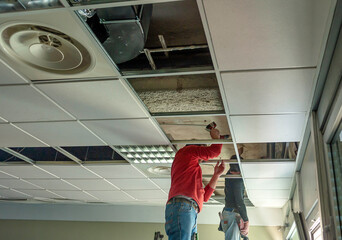Traditional Choral Music can connect people across cultural and geographic boundaries. It can also be a major point of pride for a nation.
For centuries, two poles dominated choral writing—church music and opera. Both commanded enormous virtuosity from singers and orchestras alike. Independent instrumental accompaniment opened new possibilities. Verse anthems alternated accompanied solos with choral sections, and grand motets incorporated concert-length works.

The choral genre encompasses a vast range of musical styles. Early choral music primarily consisted of church-based hymns and religious works. Later, composers began to explore secular forms such as secular musical plays and anthems. Then, with the emergence of the Baroque era, composers like Johann Sebastian Bach (and his colleagues such as Dietrich Buxtehude and Georg Philipp Telemann) introduced instrumentally accompanied cantatas and motets. Finally, Beethoven and his contemporaries established the choral symphony as a major form.
Choral music has often been considered the highest achievement of the human voice, and the musical styles associated with it are as diverse as the people who have sung its words. But a more accurate way to describe it is the “art of harmony,” and its great appeal lies in its power to convey emotion with an intensity that cannot be achieved through any other means.
Throughout the Renaissance, choral music evolved, including the development of verse anthems and oratorios based on biblical texts with a dramatic emphasis. With the Baroque period came an increase in interaction between vocalists and instruments, which led to a polychoral style that became very popular. Claudio Monteverdi pioneered this style, and his Vespers and Eighth Book of Madrigals are among the finest examples of choral music in history.
Although the Classical era brought a greater focus on symphonies and instrumental music, composers like Mozart remained fascinated by choral composition. He produced one of his greatest masterpieces, the Requiem, which depicts a series of spiritual and ethereal states ranging from awe-inspiring beauty to horror.
Oratorios and other monumental works continued to be produced, and in the late 18th century, the choral style moved closer to that of modern classical music. This style tends to be homophonic and less chromatic than Baroque choral music. There is still an element of rhythmic energy, but it must be light and lively to avoid weighing down the sound.
The choral genre continues to develop as musicians explore the musical possibilities of the voice. Contemporary composers such as Karl Jenkins, Nico Muhly, Augusta Read Thomas and Sofia Gubaidulina continue pushing traditional choral music’s boundaries into new musical frontiers.
From the hypnotic unison singing of Gregorian Chant to the complex polychoral style of the Venetian school and everything in between, choral music encompasses a wide range of musical styles. The most common choral pieces are polyphonic, featuring two or more voices playing different melodies simultaneously. This gives a rich and complex sound to the music. However, many choral arrangements are based on monophonic or single-voice musical pieces, such as folk music and contemporary classical works. Although they may not sound like traditional choral music, these arrangements still bring great music to audiences.
In the 17th century, composers began to experiment with instruments for fuller accompaniment. For example, Purcell used the orchestra to play a choral service in the Chapel Royal at Whitehall. Later, composers would write more sophisticated musical dramas called oratorio. These are usually religious but can also be secular and celebrate the career of a historical hero or biblical prophet. Unlike an opera, which is performed on a stage, an oratorio is sung without a libretto. By the middle of the 18th century, there was a decline in interest in religious music. This led to the rise of secular oratorios, which were more accessible to non-religious audiences.
Even as modernism ran roughshod over the forms of traditional choral music in the 20th century, vestiges survived. Poulenc continued to write masses and motets, for example his Motets pour le temps de nol and Mass in G Major. Beethoven’s Ninth Symphony features a choir in its final movement, showing the high regard that some 20th-century composers held for the voice ensemble.
Choral groups can be unaccompanied, a cappella, or accompanied by a piano or, as was more common in the Baroque and Classical periods, an organ or harpsichord. The acoustic accompaniment allows the singers to hear each other better and makes it easier for them to use their vocal resonance to create a sound. It also prevents them from relying too much on the choral director to generate a sound for them.
It is important for choral singers to understand that there is much more to a good sound than simply singing “straight.” For example, the shape and intensity of vowels, the intensity of consonants, the degree of legato, and even the intake of breath all contribute to a successful sound. The best way to learn this is to listen carefully and try out different approaches to singing.
Many of the pieces written for choirs in the traditional era were originally intended for solo performance, and although the singers may be performing with a group, it is important to treat this music with the same care that an individual singer would require. It is also a good idea to practice with the music as a group, since this will improve the quality of the sound and the ability to perform difficult musical passages. It is also a good idea to regularly listen to choral recordings, as this will help you develop your own singing style and technique.
One of the most significant challenges of choral singing is achieving good blend between voices, particularly in higher ranges where the tessituras can be difficult to match. In this DVD, Weston Noble lectures and demonstrates through live action his proven methods of matching voices to create a beautiful, seamless choral sound in any ensemble. This is a must-have for all choral directors, regardless of their level of experience.
There are different types of choral groups, but the most common is the adult mixed choir, consisting of soprano, alto, tenor, and bass voices, usually abbreviated as SATB. Occasionally, the choir is divided further into two semi-independent four-part groups by adding a baritone voice (e.g., SATB). Some composers also specify that the choir should be separated into two choirs in order to achieve an antiphonal effect, such as Benjamin Britten’s War Requiem.
A skilled choir should always be able to sing with ease in all registers and dynamics, even at the very highest tessituras. In addition, they should be able to support their tone with breath at all times. This is especially important in choral singing, where the sound of the entire group depends on the sound of each individual voice.
This book contains hundreds of practical suggestions, tips, and ideas for running a successful secondary choral program. Written by two master teachers, it covers classroom management, choral rehearsal management, working with the changing male voice, and much more. It is an invaluable resource for the new teacher, and a motivational “shot-in-the-arm” for the experienced teacher.
In an era where it’s become increasingly difficult to attract new audiences, many choirs are searching for ways to appeal to the broadest range of music lovers. They’re experimenting with innovative programming, hosting community sing-alongs, and offering educational workshops to find the right balance of art and accessibility. They also want to make sure that their music continues to connect with today’s audiences.
Some choirs still have a distinctly traditional focus on classical repertoire. This type of music tends to be more challenging, with a high standard of singing and a strong performance focus. It includes religious pieces, such as masses, requiems and chorales. It may also include other large-scale orchestral choral works such as Richard Strauss tone poems and Mozart’s Requiem.
Other types of choral music, however, are not so closely connected to religion or culture and are more likely to appeal to people with diverse musical interests. They may include popular songs, top-10 hits, songs from musicals and music-hall or slightly easier classical choral pieces that are easy to learn by ear. These are often sung in mixed voices. Sometimes singers of the same voice are grouped together in pairs or threes, especially for polychoral work such as 16th-century Venetian style music. With antiphonal music (effectively two choirs in one, such as Belshazzer’s Feast by William Walton) singers might be separated into different sections for the effect of SSTTAABB, or, with the use of spatial separation and amplification, the sound might be more like ABBATT.
The current popularity of classical choral music has been fueled by an interest in exploring the connections between human emotion and complex musical structures. Audiences also have been influenced by the rise of social media and online streaming, which has enabled them to discover concerts they might not otherwise be aware of. These concerts are also attracting people who are not traditionally engaged with classical music, such as young people and millennials.
Many traditional choral music organizations are concerned about losing the older members of their audience, as well as about a general trend in American society that seems to treat old people as expendable. At a time when new social protocols are being developed in the face of a deadly pandemic and uncertainty about what the future holds, it’s important that choral organizations continue to value older members of their audience, providing them with experiences that are meaningful to them.

 To fix drywall cracks, you’ll need mesh tape, joint compound, and a putty knife. First, you need to create flat surfaces on both sides of the crack.
To fix drywall cracks, you’ll need mesh tape, joint compound, and a putty knife. First, you need to create flat surfaces on both sides of the crack.